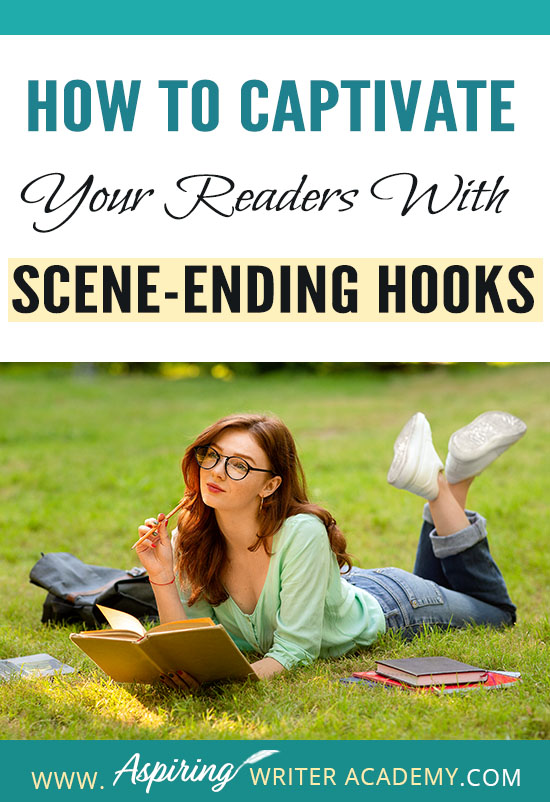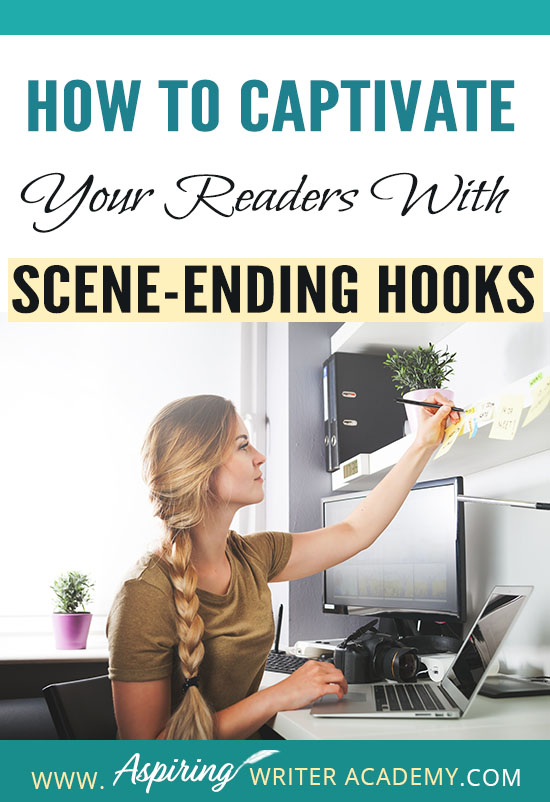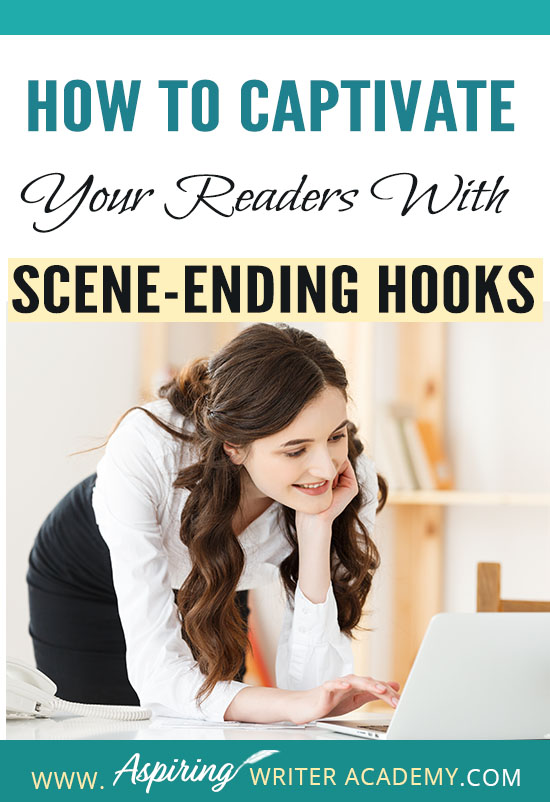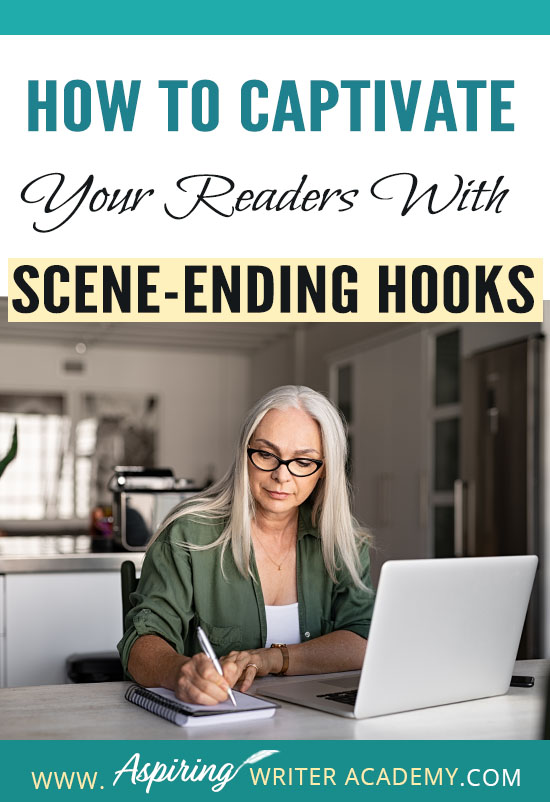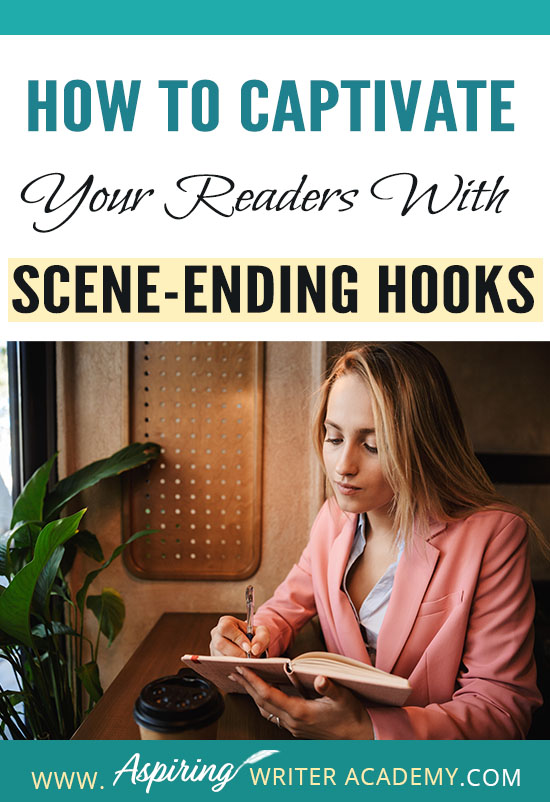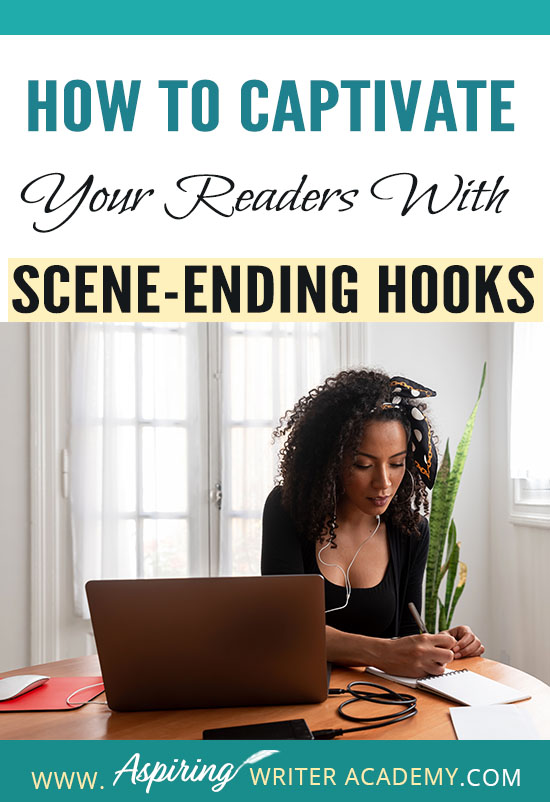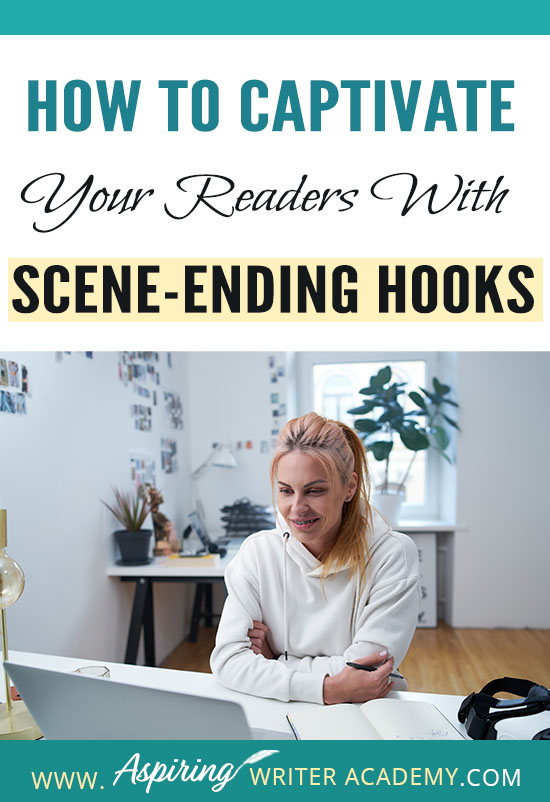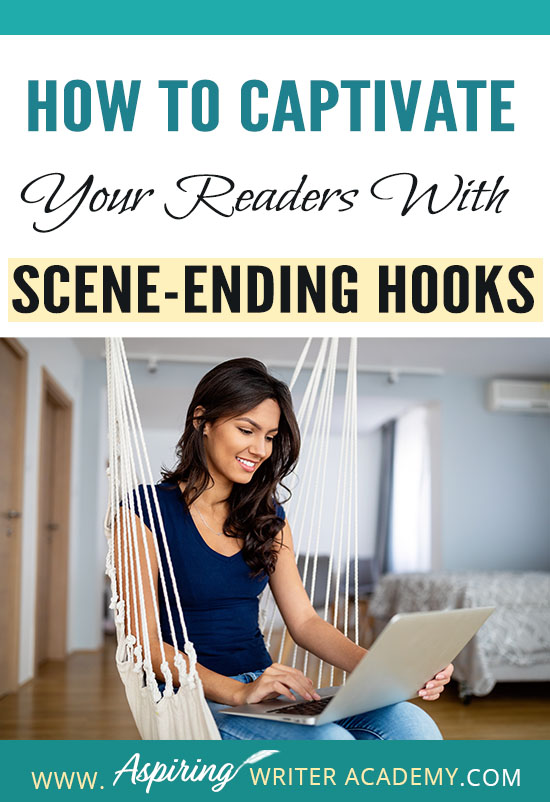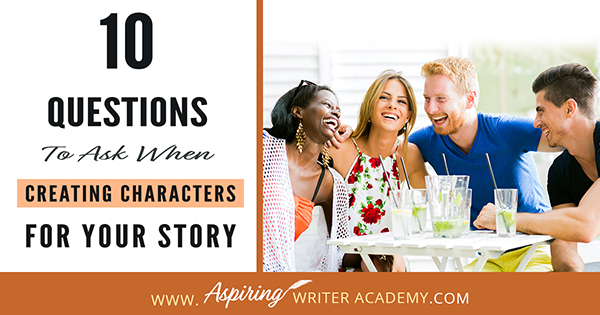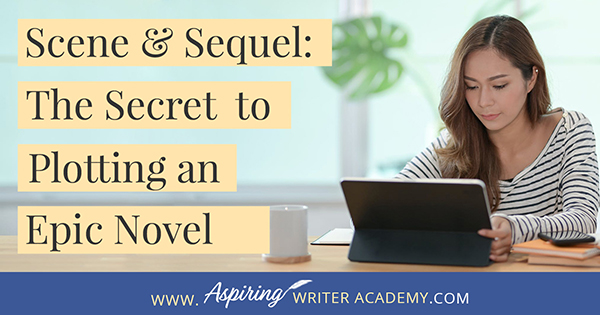How to Captivate Your Readers with Scene-Ending Hooks
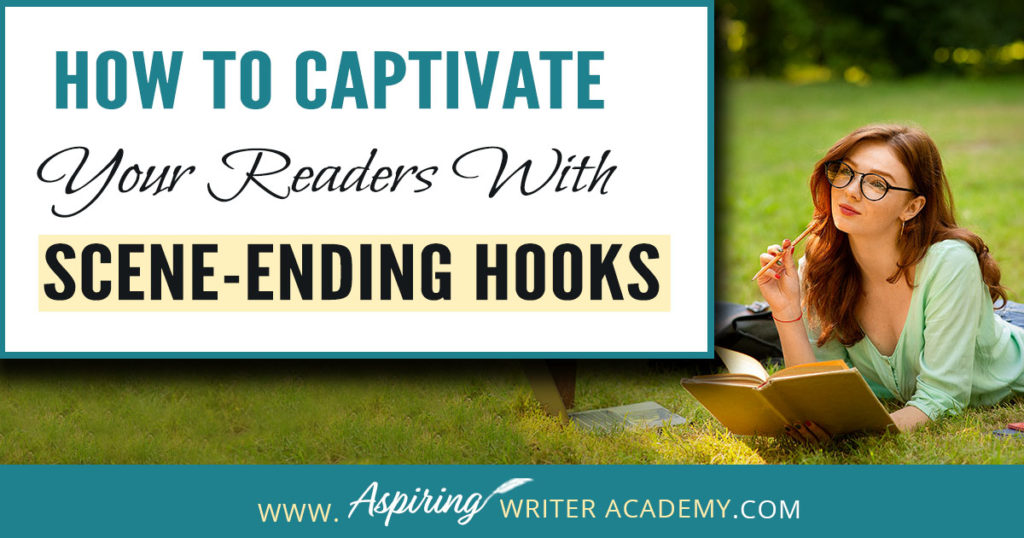
One of the best lines of praise a writer can receive from a reader is, “Your story was so good I couldn’t put it down!” This is the kind of story that is often referred to as a ‘page-turner.’ The reader becomes so involved in the unfolding events of the story that they cannot stop reading because they do not want to miss out on what happens next. Would you like to write a story like that? If so, keep reading as we outline How to Captivate Your Readers with Scene-Ending Hooks.
First, start with a likable main character. Check out 10 Questions to Ask When Creating Characters for Your Story if you need help.
Next, follow along as we look at the components of what constitutes a ‘scene’ in popular genre fiction.
1) Scene Goal
The main character should have a specific scene goal that he/she hopes to achieve so the reader knows what to root for. Before you sit down to write, take a moment to consider the following:
- What is the purpose for this scene? What does the main character want or hope to achieve – not in the story as a whole, but in this specific scene?
- The character should have an over-arching story goal, a plan to overcome a challenge or problem that will take them the whole story to solve. But then that plan should be broken up into smaller steps that can be accomplished in individual scenes. It is the small step in the plan which becomes the scene-goal that we are talking about here.
- What does your character hope to accomplish in this scene? How will that help them accomplish their bigger story goal? How badly do they want it?
- Make sure that the goal is clearly defined and ‘scene specific.’ Ok, but what does that mean? It means the character is purposefully going into this setting to take a specific action that will bring about an immediate result.

Example:
Strong goal: Sally marched up to the customer service counter of the retail store determined to get a full refund for the damaged goods the company had delivered to her doorstep.
Weak goal: Sally accepts the package from the delivery man and after seeing that the goods inside are damaged, she sets the box aside and decides to go ask three friends if they think the purchase is returnable.
In the first example, it is expected that by the end of the scene, Sally will get a direct answer. She will either get a full refund or she will not.
In the second example, all the reader may see is a passive woman having tea with friends and hoping they will make a decision for her. But it does not move the story forward. And the end of that scene will not hook the reader.
Hint: You may want to ask yourself – Is the scene goal exciting enough? What are the consequences if the character does not achieve their scene goal?
Do we care?

2) Conflict
A good scene contains conflict. As the main character of the story attempts to achieve his scene goal, he/she will encounter opposition. Who will oppose this character’s goal in this scene? What will the opposition say or do to try to prevent the main character from achieving his scene goal?
In a story that hooks readers, the main character will take ACTION to solve their own problems and will not rely on others to save the day. The character will take risks, step out of their comfort zone, face unexpected conflict.
The conflict may be with another person, against nature, or a mental struggle caused by the events in the scene. What is the best conflict for this moment in your story? What kind of conflict is going to push the character and the story forward?
The conflict can be loud with your character dodging gunfire or it can be a soft-spoken argument between friends, but the impact of the conflict and the scene-ending result should be profound.
Hint: Again ask – Are there at least 3 back and forth exchanges of conflict in this scene? Is the conflict strong enough, exciting enough? What is at stake here?
Why should we care?

3) Disaster
The scene should end with a “disaster.” Not just any disaster. The disaster does not just drop out of the sky but is set up by the character’s scene goal.
The goal sets up the scene question: Will the character be able to achieve this goal?
The conflict details the struggle involved and defines the stakes.
The “disaster” is the answer to the scene question, the result of the conflict at the scene’s end.
There are only 3 possible answers to the question – did the character achieve the scene goal? All 3 of these answers are called “disasters,” because not one of them should be considered “good.” (At least not until the end of your story where the character’s problem is fully resolved and there might be a ‘happily ever after.’)
Let’s take a look at the 3 possible answers to the scene question:
Did the character achieve their scene goal?
1.) Yes, but—
Yes, the character achieved her goal and got what she wanted, but there are strings attached, consequences she did not expect…which will make her situation going forward even more complicated.
Example: Yes, the character will get her full refund for the damaged purchase, but she will have to fill out a ton of paperwork that will make her late for an important meeting with a client at her office that she cannot afford to miss. Also, the refund will take six weeks to process.
2.) No.
The scene answer is no, the character does not achieve the scene goal and does not get what she wants. She has come to a roadblock that stops her in their tracks and the character will have to try a different approach to achieve the overall story goal.
Example: The store refuses to give the character a full refund and there is nothing she can do about it. If she does not leave, the security guards will escort her out.

3.) No, and furthermore—
No, the character does not achieve the scene goal or get what she wants and furthermore, now things are even worse than before because she tried!
Example: No, the store did not give the character her full refund, and furthermore, because she dared to argue with the customer service rep over the issue, she is now banned from the store and unable to make future purchases!
Or – Perhaps the boss of the dream job she was interviewing for was also in the store and overheard the conversation and now informs her that because of the way she handled herself, she will not get the position she applied for!
Which “disaster” will you choose? Is it disastrous enough? How will it complicate your character’s life going forward? How will it impact their quest to achieve their overall story-worthy goal? Does it matter?
Why should we care?
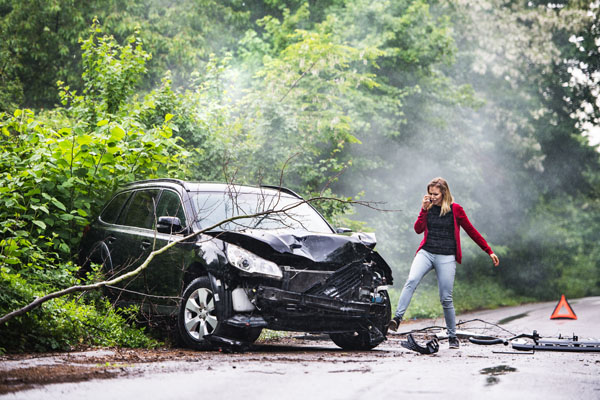
Now how can you make those scene-ending disasters even more captivating, so they hook the reader?
A captivating story:
- takes a character the reader cares deeply about and shows him striving to achieve a specific scene goal to help overcome his overall story problem.
- places tension-filled conflict in the character’s path as they face opposition within that scene.
- delivers a scene-ending disaster that the character was not expecting.
What is the worst possible scenario of what could happen at the end of this scene for your character and their goal, that will place them in even worse shape than before and give them (and the reader) something NEW to worry about?
What does the character most fear? How can you take the character’s fear and twist it to make it come true but in a way the character did not expect?
Brainstorm a list of 10 possible scene-ending disasters.
What are the possible consequences attached to each one?
Examples:
Yes, she did manage to get the boy’s attention, but— not in the way she had hoped. Now she is the laughingstock of the entire school. She’ll never be able to live down how her rival tripped her, and her dress flew up over her head when she landed…just two feet in front of the boy of her dreams. Now he will never ask her to the prom! What will she do now? Even more importantly, how will she be able to face him in chemistry class, which starts in just ten minutes?
No. Just a big fat no. She was afraid her father might turn her down when she requested a loan but didn’t think he’d be so quick and decisive about it. With a ‘no’ like that, she has no other option but to go to her uncle and ask him for the money. But he will most likely charge her more interest than she can afford. Or force her to work weekends at his bakery…with the creepy cashier who keeps asking her for a date.
No, just as she feared, she did not get the evidence she needed, and furthermore—now, because she got caught trying to obtain the incriminating files, the villain wants to kill her! The stakes are raised! The intensity of the scene just ramped up to a whole new level, making her next goal even more important. How will she ever get out of this mess? Now we are worried for her safety! And we read on…
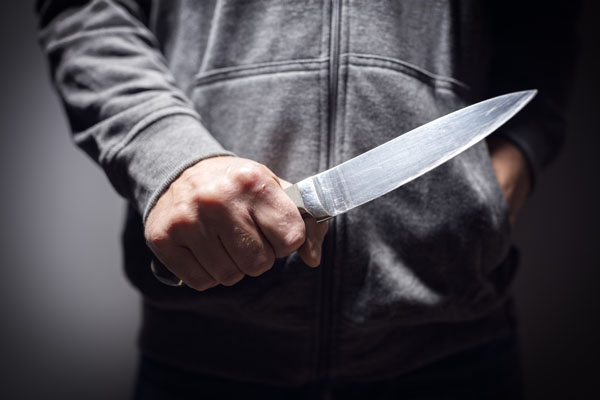
What is the BEST scene-ending disaster for your story?
Also remember, that what the character decides to do next as a result of this disaster—is the character’s next scene goal. So make sure it’s a good one!
Here is another example:
Imagine your character is a very conscientious, caring husband and father who wants to do his best at his new job to get a quick promotion that earns him more money to support his family.
Then conflicts emerge:
- Dispute with a co-worker (personality conflict).
- He makes a mistake and gets physically hurt.
- He is caught breaking rules he did not know about.
Scene-ending disaster: No, despite his best efforts, he does not succeed at his new job, and furthermore…maybe he gets fired. This changes everything doesn’t it?
But how can you make it worse?
Maybe he gets docked pay he needed that day to buy groceries to feed his hungry family.
How can it get even worse?
Maybe the boss also spreads the word to other employers in the area and now no one in the city will hire him.
These disasters raise questions in the reader’s mind. They will wonder—what will happen when he goes home and faces his family, the family he loves more than anything else in the entire world? How will his family react to this new development? What will he do next?
The reader will turn the page to find out because they care about this character and what happens to him. The reader is hooked!
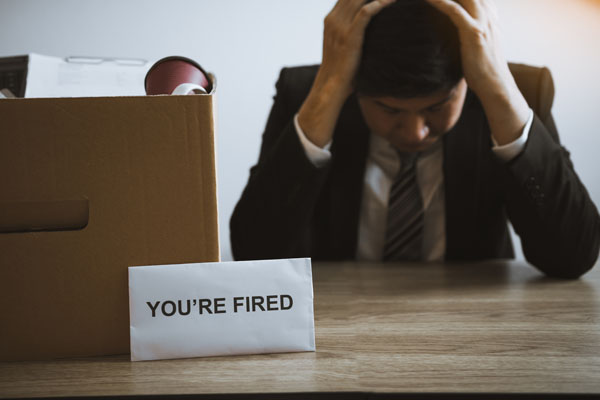
The reader can also feel intrigued when you let them in on information one of the other characters does not yet know. Perhaps a scene in the villain’s point-of-view will reveal that the main character the reader cares about is about to walk into a trap… or perhaps the reader knows from the scene before, that the villain placed a bomb under the main character’s car that will blow as soon as he inserts his key into the ignition… Just by having your main character head toward his car at the end of the day, the reader is on high alert that he may be in danger.
In this busy world, the story must be worth the reader’s time or they will put it down.
Question: Is your story riveting enough to keep your reader on the edge of their seat or at least pique their interest with each new scene-ending disaster to keep them reading more? Does it suggest there is more danger, trouble, or intrigue to come?
Make sure your scene-ending disaster raises questions!
Like a mini cliff-hanger, the scene-ending “disaster” becomes a scene-ending hook that keeps the reader turning pages to see how the character will deal with this new development. The disaster creates new questions in the reader’s mind such as:
What will the character do now?
What next step will he take to try to achieve their story-worthy problem?
How will this new development complicate the character’s life?
To make the scene-ending hook even more captivating, raise the stakes, raise the intensity of the emotion attached to it. How can you make this “disaster” even worse? What consequences can arise that make the character’s quest even more challenging? Is it exciting enough? The tougher the choices and decisions the character needs to make, the more dire the situation that you place them in, the more captivating the story.
For more help developing your characters actions and decisions, you may wish to see Scene & Sequel: The Secret to Plotting an Epic Novel
You can also download our free Brainstorming Your Story Idea Worksheet with fill-in-the-blank templates to help you develop your characters and deepen your story.
And if you have any additional questions, you can always reach us at www.aspiringwriteracademy.com/contact
Our Goal for Aspiring Writer Academy is to help people learn how to write quality fiction, teach them to publish and promote their work, and to give them the necessary tools to pursue a writing career.

ENTER YOUR EMAIL BELOW
TO GET YOUR FREE
"Brainstorming Your Story Idea Worksheet"
7 easy fill-in-the-blank pages,
+ 2 bonus pages filled with additional story examples.
A valuable tool to develop story plots again and again.
If you have any questions or would like to leave a comment below, we would love to hear from you!
Other Blog Posts You May Like
Scene & Sequel: The Secret to Plotting an Epic Novel
Scene & Sequel: The Secret to Plotting an Epic Novel (Part 2)
Writing Fiction: How to Develop Your Story Premise
12 Quick Tips to Write Dazzling Dialogue
10 Questions to Ask When Creating Characters for Your Story
45 Motivational Quotes for Aspiring Writers
Brainstorming Story Ideas: Where to Find Them
Macro Edits: Looking at Your Story as a Whole
Writing Fiction: How To Keep Track of Time in Your Story
Basic Story Structure: How to Plot in 6 Steps
Do you find it difficult to create compelling antagonists and villains for your stories? Do your villains feel cartoonish and unbelievable? Do they lack motivation or a specific game plan? Discover the secrets to crafting villains that will stick with your readers long after they finish your story, with our How to Create Antagonists & Villains Workbook.
This 32-page instructional workbook is packed with valuable fill-in-the-blank templates and practical advice to help you create memorable and effective antagonists and villains. Whether you're a seasoned writer or just starting out, this workbook will take your writing to the next level.

is a multi-published author, speaker, and writing coach. She writes sweet contemporary, inspirational, and historical romance and loves teaching aspiring writers how to write quality fiction. Read her inspiring story of how she published her first book and launched a successful writing career.

